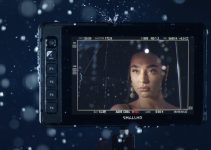Sony certainly surprised us all with just how good the a7S III turned out to be. There was a lot of worry about Sony trying to protect their high-end cinema cameras and cripple the a7S III in a few ways. After seeing the specs of internal 4K up to 120 fps in 10-bit and a variety of new recording formats it looked almost too good to be true. Why would you ever need something like the FX9 when the much more affordable a7S III is out?
Filmmaker Austin Black is a recent FX9 owner and he had to ask himself, “Do I regret buying the FX9?” Now, these two cameras are still very different, but is there enough to justify the FX9’s much higher price tag? Black compares both to help himself and everyone else figure out which is the right camera for them.
Think about it this way. If you are an indie filmmaker you can take the same money you would’ve spent on an FX9 and bought two a7S IIIs with plenty of cash left over for accessories, other equipment, or to invest in your next film. That is certainly something you need to think about.
For Black, the short answer to the question of whether he regrets his FX9 purchase is simple: there’s a lot to like about the FX9. Still, there’s a lot of good in the a7S III so he breaks down all the differences.
Physical Attributes
Might as well start with the most obvious of differences: the physical design. I mean there is the obvious in that the FX9 has a different cinema-centric design with lots of buttons and controls and dials, but Black points out that one of the most important differences is the integrated variable ND filter. The built-in ND filter makes it so you need fewer accessories to get shooting and makes a much better shooting experience.
Another difference is the hand grip with zoom rocker on the FX9. When using Power Zoom (PZ) lenses you can smoothly zoom in and out during recording.
The Image
Perhaps one of the most surprising comparisons has to come with the image quality and features. Starting with formats, the FX9 has professional formats like XAVC-I while the a7S III uses up to XAVC S-I. It’s not quite all that different in practice it seems.
Recording options for frame rate show where its 12MP sensor shines, as it has full-frame 4K recording up to 120p, while the FX9 is limited to Super 35mm for getting 4K 60p. The a7S III has better options with similar bitrates, putting it weirdly ahead.
When it comes to actual quality, the S-Log3 footage from the a7S III appeared to grade very similarly to the FX9. This is definitely an interesting area of comparison since the a7S III might win out based on these few specs.
I would add on that the FX9 will likely deliver an image with more detail as it downsamples from a higher resolution sensor than the a7S III.
Additional Comparisons
For autofocus both cameras have solid AF performance. It is similar between the two. Low-light performance is where the a7S III wins. It has incredibly low noise imagery, which is kind of the original point of the S series. There also might be a dual gain feature at ISO 16,000.
Color is similar, with S-Log3 providing excellent flexibility and dynamic range. The FX9 does have S-Cinetone and that has been considering Sony’s best when it comes to color science.
Conclusions
Based on just these points it could be easy to declare the a7S III the winner. However, the FX9’s higher resolution provides generally better footage, plus there are all the usability points that don’t fit nicely in a head-to-head comparison.
Going deeper into what makes the FX9 better is in how it is positioned in Sony’s lineup. It is above the FS7 for a few reasons, but in a direct comparison the full-frame sensor can deliver greater image quality and still provide all the Super 35mm options you want. The oversampled 4K recording modes will just deliver much better image quality compared to the a7S III.
Then there is a lot of undefined quality from the FX9 footage, such as pleasing highly roll-off and natural skin tones, that just do make a difference to filmmakers. The a7S III is still closer to a generic mirrorless camera in color science. The FX9 also has delivered incredible flexibility in post, with footage that can be pushed and pulled very easily.
At it’s most basic, the FX9 is the reliable workhorse camera that will most definitely get the job done. Having things like XLR inputs, multiple audio channels, SDI output, etc. Now, if you already have an FX9 the a7S III is a perfect companion. It offers some advantages such as faster frame rates and a smaller form factor. Your everyday shooter will love the a7S III.
The FX9 is still the better choice for professionals even if the a7S III is getting everyone super excited.
[source: Austin Black]
Order Links:
Disclaimer: As an Amazon Associate partner and participant in B&H and Adorama Affiliate programmes, we earn a small comission from each purchase made through the affiliate links listed above at no additional cost to you.



